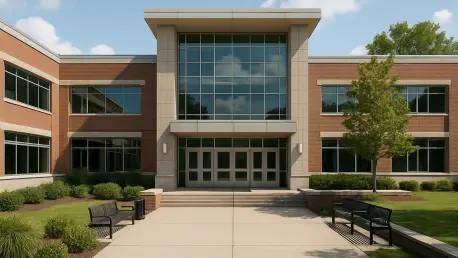Across community colleges, too many students face a maze of offices, forms, and deadlines before they ever reach a classroom, and each extra step raises the odds that momentum slips away before a credential gets earned. Howard Community College moved to change that dynamic with a $2.2 million, five-year U.S. Department of Education Title III grant dedicated to creating the Howard Hub for Student Success, a “one front door” model that consolidates advising, financial aid, career services, and wraparound supports. The design centers on removing friction: fewer handoffs, clearer pathways, and data-informed interventions that surface the right help at the right time. Rather than layering new programs onto old processes, the Hub aims to rewire how students start, persist, and complete. The strategy aligns with a broader national push to raise retention and completion by simplifying access, ensuring equity, and measuring outcomes that matter for transfer and employment.
Building The Howard Hub
The Howard Hub will reframe student navigation as a single, integrated experience, replacing scattered queues with coordinated case management and shared technology. Academic planning, scholarship matching, and career exploration will sit inside one workflow so a conversation about course load can immediately connect to financial aid options or tutoring. That cohesion matters for students balancing work, commutes, and caregiving, where a delay can cascade into a withdrawal. The grant includes professional development to strengthen cultural responsiveness and advising quality, investing in staff capacity to serve first-generation, multilingual, and adult learners. It also funds assessment infrastructure to track key milestones, using dashboards and early alerts to flag risks and enable continuous improvement. The aim is not just service consolidation but outcome coherence—aligning every touchpoint to persistence, completion, transfer, and job placement.
Moreover, the Department of Education expects the Hub to produce a model that other colleges can adapt, signaling a shift from boutique pilots to scalable systems. That expectation dovetails with HCC’s recent momentum in federal support, which has topped $4 million across education and workforce initiatives in the past two years. The college has emphasized that integration keeps costs down for students and clarifies who does what behind the scenes, while shared metrics make it easier to learn what works. Crucially, the Hub’s design pairs technology with human relationships; staff will receive training to interpret analytics ethically and act with empathy, translating data into timely outreach rather than impersonal nudges. With a five-year runway from 2025 to 2029, the effort can move through planning, phased rollout, and refinement, offering evidence about what scales, what does not, and where policy changes could remove remaining barriers.
Scaling Equity And Workforce Impact
The Hub sits inside a broader ecosystem that links student success to family stability and regional job demand. HCC secured a $1 million CCAMPIS grant to reopen its Children’s Learning Center, now serving more than 70 families in partnership with a local nonprofit—an intervention with outsized impact given that 24% of students report child dependents. Last year, 2,900 students received Pell Grants, underscoring the need to connect aid, scheduling, and childcare in one plan. On the workforce front, a $200,000 U.S. Department of Commerce grant is expanding cybersecurity apprenticeships, building on a campus visit by former National Cyber Director Harry Coker Jr. The college also broke ground on a Workforce Development and Trades Center, aligning short-term credentials with employer demand. Together, these moves knit academic advising with real job pathways, so persistence translates into earnings.
External advocacy has also shaped the trajectory, as leadership positioned the institution as a national model for community college excellence and federal partnership. That stance carried weight because the strategy pairs equity with measurable results—tracking retention, credit momentum, and post-completion outcomes—rather than relying on anecdotes. The Hub’s continuous-improvement loop, coupled with childcare access and apprentice pipelines, offered a template for systems-level change that other campuses could localize. Next steps included formalizing cross-unit workflows, publishing a public dashboard, and piloting the “front door” experience with high-need populations first. As the plan moved into implementation from 2025 to 2029, the focus had shifted from adding programs to building a durable support system, one capable of surviving budget cycles and leadership changes while raising completion and widening opportunity.









